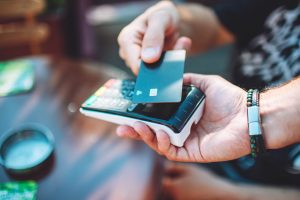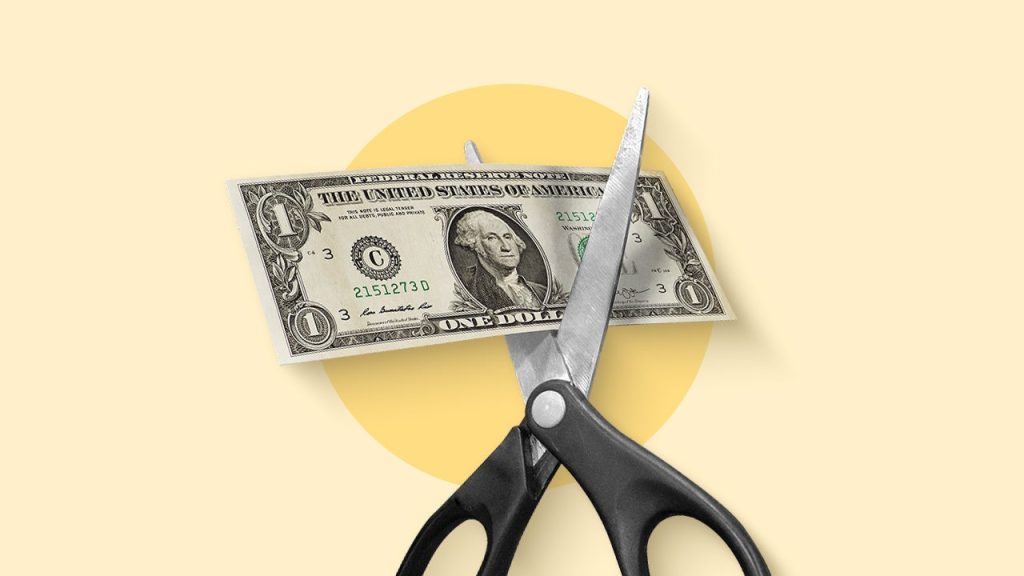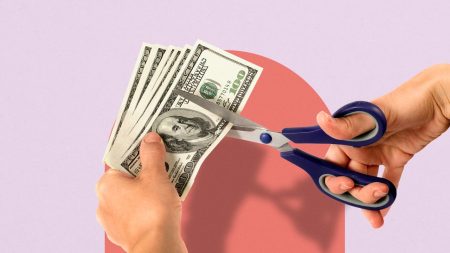Key takeaways
- As Americans reckon with high prices, “no-buy” challenges, which swear off most discretionary spending, have become popular online.
- No-buy challenges are designed to help people re-examine their spending habits and save more money.
- To optimize your own no-buy challenge, it’s important to identify why you want to do the challenge, eliminate spending temptations and pick a savings account with a high annual percentage yield (APY).
Spend any time on FinTok (the personal finance corner of TikTok) and you may have heard of a “no-buy” month, which is a budgeting challenge to not spend money on certain discretionary purchases for a month. Whether you eliminate one spending category in particular or cut discretionary spending altogether, the point of a no-buy challenge remains the same: less spending, more saving.
As Americans try to rework their budgets amid today’s economic challenges, such as inflation and stagnant wages, people are taking on variations of no-buy challenges to save more and change their spending habits. These challenges come in a broad spectrum: While some people are just cutting a few expenses to free up room in their budget or are simply trying to spend less, others are taking the more dramatic route by cutting nearly all spending for a year.
Kelci Crawford, a 35-year-old in Toledo, Ohio, is one such person. Crawford has sworn off spending throughout the entirety of 2025, except for bills (such as rent and utilities), groceries, replacements of needed items (such as shampoo) and a limited amount of mutual aid for friends and community members. They won’t be spending any additional money on discretionary purchases.
Crawford, a full-time freelance artist whose yearly income is below the federal poverty line, has a goal to reach their target $3,000 emergency savings fund this year and pay off a little less than $1,000 of business and personal debt. After looking at their budget last year, they realized they couldn’t afford to keep spending on discretionary purchases if they wanted to meet their goal.
“I caught myself (overspending), and I’m like, OK, I’ve got to do a hard reset. I’ve got to do a no-buy year,” Crawford says.
While cutting out all discretionary spending entirely for a whole year may guarantee you some extra savings by December, it’s not realistic for most people. Cutting out discretionary spending entirely is a major change, and cutting out toys, electronics and activities may be especially difficult for families with children. That’s why many people doing a no-buy challenge are adapting it to meet their own budgetary needs — choosing to cut out only some spending categories where they think they’re overspending, such as eating out, clothing or beauty items.
No-buy challenges are proving popular as many Americans say their savings need a reset. Nearly half (43 percent) of Americans would borrow money to pay for a major unexpected expense (such as $1,000 for an emergency room visit or car repair), according to Bankrate’s Emergency Savings Report. Without that sufficient savings cushion, a small emergency could lead to big consequences, such as being unable to pay your bills — which is also a concern for many people. About 1 in 3 (34 percent) workers are living paycheck to paycheck, meaning they have little to no money left for savings after covering monthly expenses, according to Bankrate’s Living Paycheck to Paycheck Survey.
While the no-buy challenge isn’t for everyone, as Americans report low savings and as the cost of living continues to increase, creative solutions like a no-buy challenge may be just what some people need to stay the course in today’s economy.
Americans are adapting the no-buy challenge to fit their needs
Iris Ayala, a 27-year-old content creator in Chicago, has adapted the no-buy trend to meet her own goals. To cut down on clutter and unnecessary spending, Ayala made a long list of items she won’t be buying in 2025, including makeup, athletic clothing, new technology, hair tools, hair care and reusable water bottles. So far, she estimates she’s saved about $5,000.
“I moved into a new place, and naturally, when you move you declutter things you don’t need anymore. I looked around and I just had a ton of junk,” Ayala says. “That’s what really inspired my no-buy year, because I’m looking at all these items I was buying just nonchalantly, and it’s all just money, in the end, that I threw away.”
A no-buy challenge may save you money, but there’s no guarantee that it will break an overspending habit in the long run. Without taking more steps towards a permanent mindset shift, it could be easy to fall back on old habits and revenge spend when the year’s up.
But four months in, Ayala feels that the challenge has permanently changed the way she approaches spending. Before, she felt she was buying too many unnecessary items based on online trends or because she saw them advertised on social media, not because she actually needed them. Now, thanks to the challenge, before buying something, she’s more mindful about whether she’s going to use the entire product and if she’s going to get her money’s worth.
“I’ve found a lot of benefits that aren’t just financial,” Ayala says. “My wallet is feeling a difference, for sure. I didn’t realize how much unnecessary spending I was doing, now that I’m a no-buyer. But I noticed just having less clutter has been good for my mental health.”
Money tip:
If you’re curious about doing a “no-buy” challenge, try cutting discretionary spending for one week per month, or one month per year. But take the time to examine your spending habits and understand why you’re spending the way you are, so you can avoid “revenge spending” as soon as the no-buy is up.
The economy is incentivizing some to cut spending
Many Americans are doing a no-buy challenge now because of macroeconomic concerns. High inflation, high credit card interest rates, stagnant wages, new tariff policies and widespread federal layoffs in 2025 have made it more appealing to focus on saving over spending.
Peter Cohan, an associate professor of practice in management at Babson College, breaks the appeal of the no-buy trend into two categories: economic and psychological. From an economic perspective, many Americans are worried about how the state of the economy will impact their finances. Economists say there’s a 36 percent chance the U.S. will enter a recession by March 2026, according to Bankrate’s Economic Indicator Survey. Between a possible upcoming recession and the high prices Americans are facing today, some people feel it may be smart — or even necessary — to dramatically pull back spending.
Meanwhile, psychologically, when someone has no control over trade policy or inflation, choosing to spend less may also give them a sense of control over their finances, according to Cohan.
“From my perspective, (there are) a lot more people feeling a great loss of control of their lives since the beginning of the year,” Cohan says. “One thing they certainly still control is how they spend whatever money they have.”
Ayala, for one, is going to put that extra money she saved towards her emergency savings fund. Currently, she has about six months of expenses saved, but she says due to today’s economic uncertainty, she wants to increase that by at least a couple of months.
“I feel like we’re uncertain about things, even grocery prices,” Ayala says. “Everything at the moment is just up in the air with the political and economic landscape at the moment. Having that (cushion) gives you a little more peace of mind and alleviates some stress.”
Meanwhile, Crawford is concerned the Trump administration’s tariffs will affect their small business. A major portion of Crawford’s yearly income comes from selling art prints, books and merchandise at fan conventions, but the paper they use is imported from Canada and the acrylic goods they use are imported from China. If those items are affected by tariffs, it could affect the supply and cause prices to skyrocket, which could affect Crawford’s bottom line, they say.
“I’m not sure how (the Trump administration) is going to affect me in the future,” Crawford says, “so I’m just trying to hedge my bets and stick with the stuff that works.”
No-buy 101: How to take control of your spending
If you’re interested in doing a no-buy year or just interested in cutting back on spending over a certain time period, these tips can help you get started.
1. Consider if a no-buy challenge is right for you
No-buys will definitely save you money, but putting restrictions on your spending overnight is a significant challenge. A no-buy challenge might be best for you if you’re on a tight budget and are looking for creative ways to save money. Or, if you’re concerned about your spending and are looking for a way to change your financial habits, a no-buy can buy you some time to consider the reasons behind your spending and change your mindset. You can start over with a clean slate when the no-buy is over.
If you’re just looking to free up a bit of room in your budget, but aren’t interested in making a major lifestyle change, consider other ways of cutting basic costs, like unsubscribing from unused subscriptions, shopping for groceries using coupons and price-matching or cutting spending on brand-name goods.
2. Identify your goals
If you’re looking to save money this year, it might help to set a specific savings goal. Doing so would focus your efforts around a tangible benefit and motivate you to keep going.
“Change is hard, and saying no to certain habits is difficult,” Melinda Opperman, chief external affairs officer at Credit.org, a nonprofit credit counseling organization, says.
Common goals that she sees in her work are:
- paying down debt, such as $5,000 in credit card debt or $10,000 in student loans.
- saving for a $30,000 down payment on a home.
- increasing your employer’s 401(k) match to the $23,500 yearly maximum.
- saving for a $15,000 new car.
Opperman also suggests announcing your goal and intention to save more money publicly, so your friends and family can help keep you accountable. That extra (positive) peer pressure can be the push you need to get you over the hump and meet your goals.
3. Avoid temptations
Social media is a great tool to stay connected with your friends, family and favorite online creators, but it’s also a great way to be bombarded with ads encouraging you to spend. Help keep spending to a minimum by decluttering your phone and making it harder to spend money online. You can do that by:
- deleting the apps to your favorite stores.
- unsubscribing from store texts and emails.
- considering the 48-hour rule. After putting an item in your online cart, wait 48 hours before hitting “Buy.” That gives you time to decide if you really want to buy the item, or if you’re just impulse shopping.
- using social media app settings to control what accounts show up on your feed.
- curating your social media feeds to only show you people you’re following — not suggested content.
4. Utilize your savings to the fullest extent
Once you’ve begun spending less, you’ll need somewhere to put those funds. Consider a high-yield savings account (HYSA) or certificate of deposit (CD), both of which can give you a higher rate of return on your savings than a typical savings account.
Read the full article here









